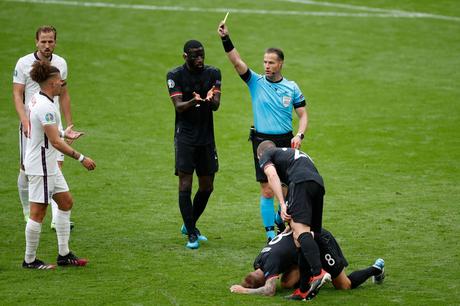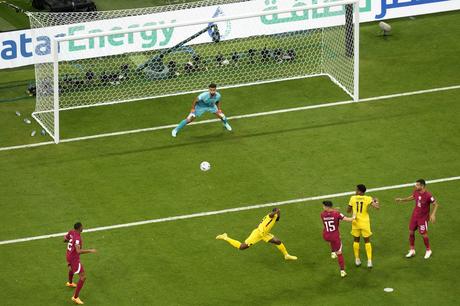Football is one of the world's most beloved sports. This guide is ideal for anyone wanting to start their journey into football or refresh their knowledge.
Introduction
Football, or soccer in some countries, is one of the world's most beloved sports with a long and illustrious history. No matter your level of expertise, playing this beloved sport can be an enjoyable experience - from amateur to professional players alike! In this course we'll cover both fundamentals of playing as well as its application in games. It is essential to comprehend this sport's nuances; we'll cover common offenses too! This guide is ideal for anyone wanting to start their journey into football or refresh their knowledge on its most common offenses. This comprehensive guide makes perfect sense whether you're just starting out or looking to refresh your knowledge on football!
The Field of Play
The shape of a soccer field is rectangle-shaped and must be clearly marked with lines, with the touchline being more than twice the line of goal. The field must then be divided into two halves by a halfway line that defines its boundary. Finally, four corner flags with an end goal on each side complete this triangle-shaped field.
Every player must abide by the regulations listed and show respect to other players on the field. Avoid physical contact with other players or objects, and refrain from using foul language or verbal abuse toward referees or players. Also, respect your team's equipment and uniforms as well as designated areas in your playing area.
It's essential to remember that any ball outside the bounds could result in either an out-of-bounds throw-in or corner kick, depending on its origin. A throw-in occurs when someone kicks the ball away from the playing field while corner kicks are kicked from behind the field lines.
The Ball

The ball is the most essential element of football equipment. It must have a minimum diameter of 68 centimeters and an area between 27 to 28 inches, weigh no more than 450g (16oz), and be filled with air pressure at sea level (0.6-1 atmospheric pressure), or other substances for surface preparation of the ball.
Every team with the ball has the option to play, dribble or shoot towards their opponents' goal. You are allowed to move the ball with your feet, legs and chest as long as you do not touch any other bodily parts; however your opponent has a right to kick when handled carefully.
Shinguards are mandatory during matches. These guards shield players' feet or legs from injuries caused by collisions between their foot and leg.
Number of Players
Soccer requires 11 players in order to play. A goalkeeper is required for every team and 10 additional outfield players are also necessary. Only the goalkeeper has the ability to handle the ball with his hands; all other players must use their heads or feet. When playing football, substitutions are allowed; teams may have up to three substitutes in a single game which allows teams to make tactical changes and keep players fit longer.
Duration of the Game
Soccer teams compete to score more goals than their opponents while adhering to certain guidelines in order to reach victory.
A standard football match consists of two periods lasting 45 minutes each, with a 15-minute intermission between them.
Referees have the authority to decide how much extra time (or injuries time) should be added at the end of each half, in order to compensate for delays caused by injury, substitutions and prolonged celebrations. This extra time may vary according to conditions in the game and how long it took to resolve disputes.
After regulation ends and no team has won due to stoppage/injury, extra time may be played in order to guarantee a fair result. This extra time may be split into two 15 minute halves or last anywhere between 15-30 minutes depending on the competition rules. Each team is allowed to take penalties until there is an extra-time victor.
Starting and Restarting Play
The kick-off in the middle of the field signals the start of a game. It will be taken by whichever team won the coin toss and must remain within their zone until play commences. After this initial kick-off, players on either side can kick it in any direction they wish.
Play is restarted once a goal has been scored or play is stopped for any reason. Throw-ins take place when the ball is kicked out of bounds on either sideline and must then be thrown back using both hands. Penalty kicks are given to opposing teams when violations take place within twelve yards of the goal line and each team gets one chance at scoring without blocking against anyone defending that zone.
Last Note: If the game was suspended due to injuries or any other reason, it can be revived either by throwing the ball back where it stopped or freekicking it in an area deemed not in play.
Scoring Goals

When a shot strikes the post or crossbar and goes straight for the goal without interference from officials or players, it is considered to be a goal. Fans are usually delighted when this occurs, commonly referred to as a"goal kick".
Scoring goals may seem simple enough, but it requires precision and skill throughout the game.
Offside Rule
One of the most complex and crucial rules in soccer is offside. This rule works to guarantee everyone on the same field, as well as to prevent players from having an advantage due to being closer to goal than other players.
An individual may be considered offside when they cross their opponent's goal line but are not the last in line. Passes made by those lower or similar to them cannot legally be accepted as assists; any attempt at receiving one from above is considered illegal and the official will award an unconstitutional kick to their adversary.
Players are not considered offside when receiving an offside corner or goal kick throw-in. Furthermore, it's impossible for a player to be judged offside if their height matches that of the second in line defense even if they may be closer to the goal than their counterpart.
Fouls and Misconducts
In Football, infractions and fouls refer to any action taken by players which is deemed unfair and in violation of the guidelines. This includes physical contact with an opponent player, intentionally handling the ball, or interfering in another's actions.
In the event of a foul being committed by an individual, the team in opposition will be awarded an unrestricted kick. Depending on how serious the offense, various penalties could be assessed; for example, violent conduct could result in immediate red cards and removal from play altogether.
Even if an offence does not involve contact with other players, players could still face consequences. Disagreements with officials, offensive gestures and language, and entering a pitch without consent of the referee are just some examples of offenses which could result in either a yellow card being issued or booking of a red card being issued.

Free Kicks
Referees have the discretion to grant teams free kicks if they believe an offence was committed during play. There are different types of free kicks awarded depending on where an incident took place.
If a person commits an offence within their penalty box, they have the option to kick off or receive an indirect kick. In both cases, all opponents must be within 10 feet of the ball for this option to apply.
Goalies have the option to aim directly towards the goal when taking free kicks. There is no time limit or distance requirement for getting there; players simply need to touch or pass the ball to another player before shooting it at goal. Touching can occur at any point during a free kick.
Penalty Kicks
Soccer would not be complete without penalty kicks. When a player is found guilty of violating the penalty area, penalties will be given. A member from the attacking team attempts to score while the goalkeeper stands in defense.
Goalkeepers must remain on their line until contact has been made by the shooter. While they have the freedom to move in any direction, they must remain stationary until contact is made by the shooter.
In some circumstances, penalties can be used to break a tie if both teams score equal goals during regulation time. Each team receives five penalty shots in succession and if both remain knotted after five penalties, another round of penalties will be played to decide who prevails.

Conclusion
Football, commonly referred to as soccer, has been played for thousands of years and is popular worldwide. Though its rules differ depending on where you play or your culture, the fundamental elements remain constant: two teams compete with the fundamental rules to move a ball toward their opponent's goal while attempting to block it from reaching it. In order for one team to win, they must score more goals within 90 minutes or in two half hours lasting 45 minutes each; goals can be scored several different ways.
Football follows a set of rules to guarantee fairness and security. Offside rules were established to prevent one team from playing aggressively; red or yellow cards, as well as fouls are given to those who violate the law (i.e. unsafe tackles or dissent). Corner kicks take place when defensive player plays ball first before it's taken out of bounds; penalty kicks may also be taken for certain offenses within the penalty zone; free kicks occur when team commits violation outside their zone.
Football has many laws that govern its play worldwide. Substitutions in a match are strictly forbidden and can only be done by three players at once. Furthermore, certain countries require players to wear protective headgear in order to shield their heads during games.
Football is an enthralling team game that requires talent to succeed. To fully enjoy this thrilling sport, one should become familiar with its rules and regulations as well as those specific to certain countries or leagues.
Frequently asked questions
1. The Field: A rectangular patch of grass can be used for football games. It measures 100-130 yards long and 50-100 yards wide.
2. Number of Players Each team requires 11 players, including the goalie. If there are fewer than seven on the field, play cannot commence or be completed.
3. Match Duration: Standard soccer matches are played over two 45-minute halves, with 15 minute breaks between each half. Depending on how much time is lost due to injury or substitutes, the referee has the discretion to delay starting each half.
4. Begin and End Play The game will resume once a goal has been scored. If either team concedes, play will resume immediately following.
5. Scoring Goals: When all components of the ball have crossed over the goal line and are situated inside or between two crossbars (as in rugby), it's considered to be a goal. Throw-ins and corner kicks cannot be used for scoring; they must not be put on the field after an inbounds incident has taken place.
6. Free kicks and fouls. Anyone in contact with the ball (or attempt to) when it is being played off can commit an offense. Any violations within 18 meters of the penalty zone may result in players receiving a penalty kick; additional kicks may be awarded depending on which pitch was violated.
